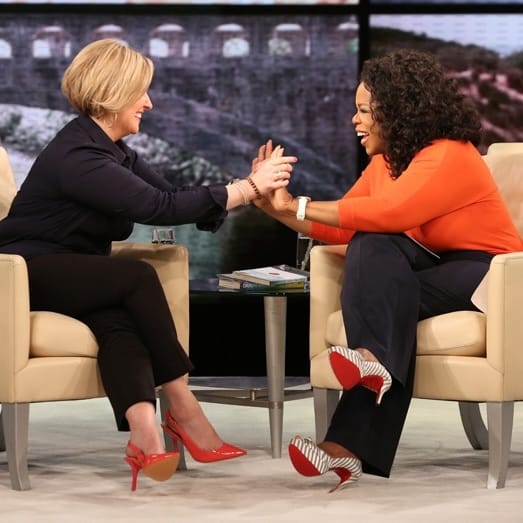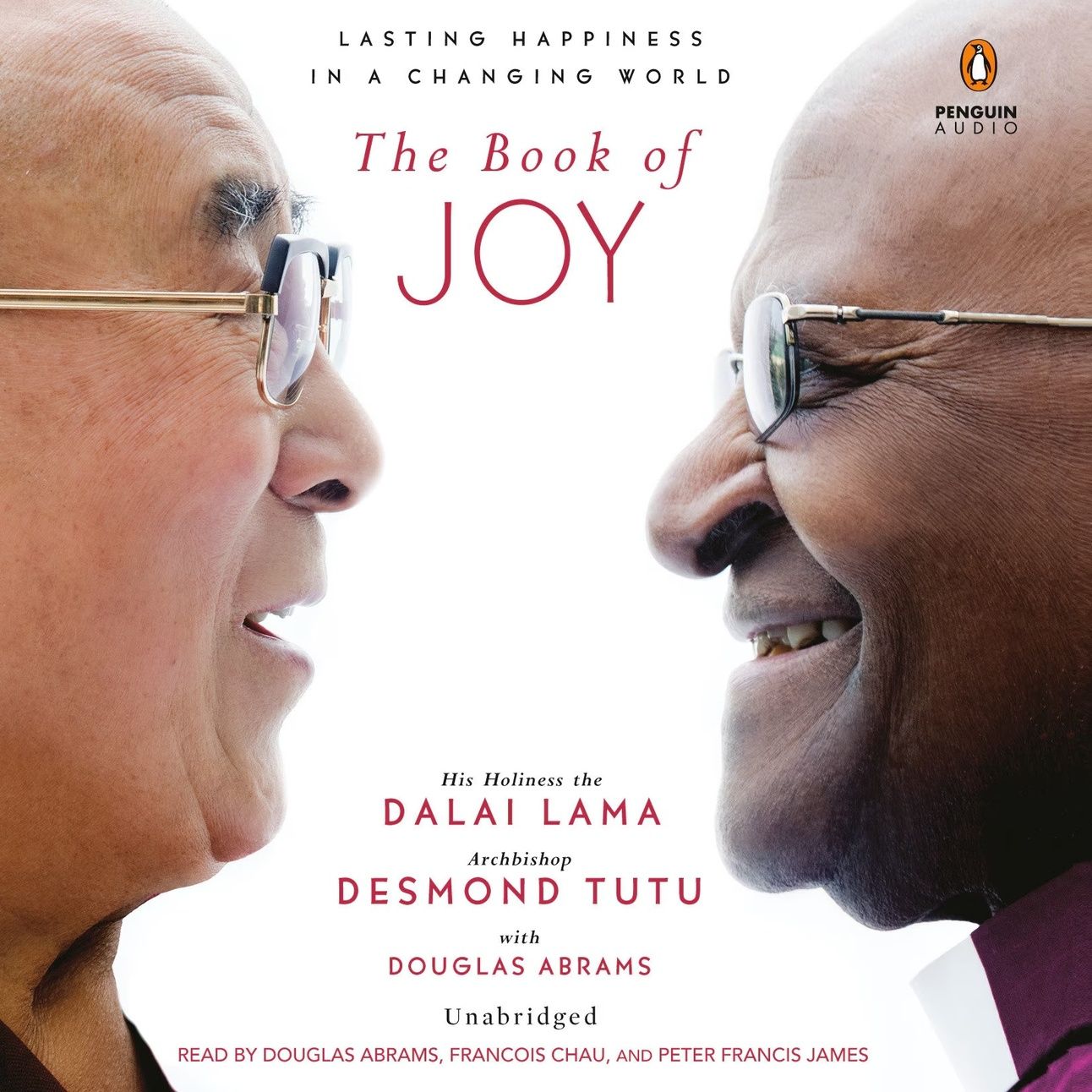Hi {{first name | there}},
A couple of weeks ago, my wife walked into my office, practically buzzing. She had just gotten her final mark back from one of her university classes: an A+. Not only that, but her professor mentioned it was the first A+ he’d ever given—after more than 20 years of teaching.
She told me the news with that sort of stunned joy that only comes when you didn’t expect to hear what you just heard. I just sat there, letting it land—not just proud, though I was—but full of gratitude. Gratitude for who she is. For her innocent brilliance. For the hours she’s poured into learning. And for the quiet honor of having a front-row seat to her story.
And that’s when joy arrived. Not the big, celebratory kind. But the kind that slips into the room quietly, wraps around you, and says, You’re witnessing something beautiful. Don’t miss it.
Because that’s how joy works. It came, not because I’d aimed for joy—but because I was paying attention to something beautiful happening right in front of me. Because I’d paused long enough to admire her, to appreciate her. Joy didn’t need to be summoned. It just needed space.
Gratitude Opened a Side Door to Joy
A few days later, joy found me again—this time disguised as something far less welcome. I woke up with my eyes glued shut. Conjunctivitis. Red eye. It got so bad that when I tried to read a text on my phone, the letters blurred and doubled. I tried covering one eye, then the other—same result. It was disorienting. And a little terrifying.
What if this doesn’t go away? I thought. What if this is permanent?
Thankfully, after a few days of meds, rest, and blinking through the burn, my vision cleared. One morning I picked up my phone, and there they were—words. Crisp. Clear. Simple.
And just like that, joy was back. Not with fireworks. Not with a parade. But quietly—right there in the mundane act of reading.
Not because something miraculous had happened. But because I could see again. And I was grateful—grateful to read, to focus, to look into the faces I love without squinting through a blur of pain.
And once again, I was reminded:
Joy doesn’t come because we chase it. It comes because we pause. It rises when we stop long enough to notice what we still have, to name what we’re thankful for, and to spot and call out the good that’s already here.
And that—always—is where joy begins.
From Wrong Spotting to Right Spotting
But here’s the thing: I haven’t always been good at this.
If I’m honest, I’ve spent a lot of my life being a master “wrong spotter.” I can walk into a room and immediately notice what’s off. What’s missing? What could go wrong? I’ve called it discernment. Sometimes I’ve even called it leadership.
After two decades as a music producer, that muscle got a full workout. It’s what helped me chase down the perfect take, stitch together vocal comps that weren’t just good—but great—and polish a recording until it sparkled. (Which, as a recovering perfectionist, meant it was never quite good enough.)
But lately, I’ve been learning that “right spotting” might be an even greater superpower.
And like any muscle, it needs practice.
Because joy doesn’t rise up when we point out what’s broken. It rises when we notice what’s working. When we stop to name the good. When we become fluent in admiration.
The Practice That Awakens Joy
Dr. Brené Brown, in her research on vulnerability and wholehearted living, makes this point with clarity: it’s not joy that makes us grateful. It’s gratitude that makes us joyful.
Not the performative kind of gratitude—the “hashtag blessed” stuff—but the kind that notices the small, sacred things. That pauses to admire. That names what is good, even when life is hard.
The kind of gratitude that quietly says: I see you. I appreciate this. I’m thankful for this moment.
And it doesn’t just change us personally—it changes our relationships.
The Science Behind Right Spotting
Drs. John and Julie Gottman, after decades of studying what makes relationships last, came to a surprisingly simple truth: the healthiest people are “right spotters.”
They’re the ones who practice the habit of noticing and expressing fondness and admiration. They look for what’s good in each other and—here’s the key—they say it. Out loud. Often.
And while their research focused on couples, the practice is universal. It’s not just about marriage. It’s about how we move through the world.
Creating a Culture of Appreciation
What if this way of seeing became our default? What if right spotting—gratitude in motion—became the norm?
What if we didn’t save our appreciation for eulogies or holidays but practiced it in boardrooms and grocery lines, across dinner tables and text threads? What if we got really good—not just at noticing beauty—but at naming it?
Here’s what would happen: joy.
Not the hyped-up, Instagram-filtered kind, but the deep, grounded kind.
The kind that arrives quietly when someone feels truly seen.
The kind that lingers when appreciation fills the air.
The kind that takes root and sticks around.
And if we actually lived this—right spotting, thankfulness, the slow art of noticing—I believe we’d stop seeing joy as rare. We’d start seeing it in patterns:
In our homes.
In our workplaces.
In our cities.
Even across the divides we once believed were unbridgeable.
It’s not about pretending things aren’t broken.
It’s about remembering what’s still whole—
and choosing to say, “Look at that. Isn’t it good?”
That’s that kind of gratitude that leads to joy.
Three Ways to Practice Gratitude—and Release Joy
Make Appreciation a Daily Ritual
Don’t save gratitude for grand moments. Thank your coworker for being dependable. Tell your friend their presence matters. Catch someone doing something right, and say it.Say What You See
Practice the Gottmans’ principle: fondness and admiration. Not just in marriage, but everywhere. At home. On your team. In your neighborhood. Become a master of spotting what’s good and calling it out.Let Gratitude and Grief Coexist
Real gratitude isn’t toxic positivity. It doesn’t deny what’s hard. It honors both pain and beauty. Ask yourself: Even in this moment, is there something I can still be thankful for?
Gratitude won’t fix everything—but it just might change the atmosphere, soften sharp edges, and make space for joy to take root—in the quiet, in the ordinary, and even in the hard.
And honestly, who doesn’t need a little more joy in their life?
Until next week,
Jonathan Penner | Founder & Exec Dir. of LifeApp


Resources To Dig Deeper

Video
Dr. Brené Brown on Joy: It's Terrifying
Brené Brown explains why joy can feel terrifying: it makes us vulnerable. To protect ourselves, we often rehearse disaster instead of fully feeling joy. “When we lose our tolerance for vulnerability, joy becomes foreboding,” she says. But when we choose to notice and appreciate the ordinary, joy quietly returns—even in a world marked by scarcity and fear.

Book
Joy
The Book of Joy captures a rare, intimate conversation between the Dalai Lama and Archbishop Desmond Tutu as they explore one profound question: how do we find joy amid suffering? Through laughter, wisdom, and spiritual practice, they reveal what this newsletter affirms—joy isn’t the absence of hardship, but the result of gratitude, compassion, and choosing to live love well.
Learn More About
Upcoming 3 Day Retreats
June 19-22
Talking Rock, GA USA
August 7-10
Talking Rock, GA USA
October 16-19
Talking Rock, GA USA
November 13-16
Hope, BC Canada
“The LifeApp 3 Day has changed my whole life and that of my kids! I live everyday by the 21 days to live love well. I read it before bed and am very mindful in my thoughts and actions. Yes doubt creeps in. I consciously put in the effort to change my thinking and make a better outcome. I choose happy, I choose strength, I choose healthy!”

